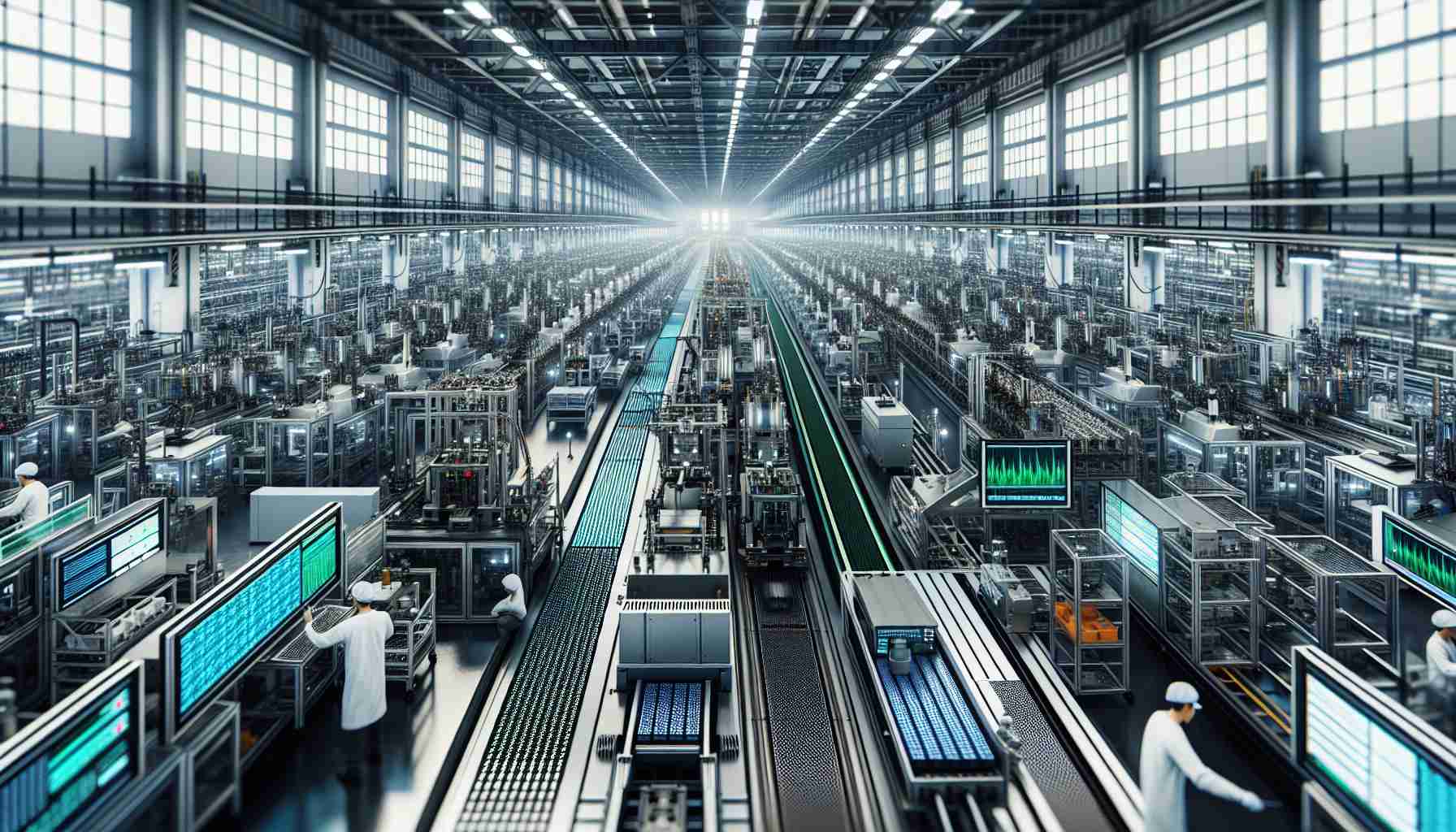The semiconductor industry witnesses a monumental upsurge as demand for artificial intelligence (AI) processors skyrockets. With major players like Nvidia reaching new heights, the scene reflects a promising future for chipmakers.
TSMC’s bullish forecast on AI chip sales ignites hope in investors, fostering a bullish sentiment in the market. The surge in demand for AI-related technologies propels chip stocks to unprecedented levels, demonstrating the sector’s resilience and growth potential.
Amidst the fervor, semiconductor giant Intel makes strategic moves to fortify its position in the competitive landscape. Expanding chip fabrication facilities signifies Intel’s determination to stake a claim in the advanced manufacturing space challenging industry frontrunners like TSMC.
Industry analysts enthusiastically embrace the positive momentum, citing the robust demand for AI chips propelling the industry forward. The evident traction in the chip sector further underscores the pivotal role played by TSMC in steering the industry towards a future brimming with possibilities.
Excitement reverberates as TSMC amplifies its production capacity to meet escalating demand, heralding a new era of innovation and technological advancement. The relentless pursuit of excellence underscores TSMC’s commitment to driving the industry’s growth trajectory.
As the chip industry faces a transformative shift driven by AI, companies like TSMC stand at the forefront, shaping the future of technology and heralding a new era of innovation and progress.
Additional Facts:
– One of the key drivers behind the surge in demand for AI processors is the increasing integration of AI technology in various applications beyond traditional computing, such as autonomous vehicles, healthcare diagnostics, and smart devices.
– The chip industry is also experiencing heightened demand for high-performance computing (HPC) chips, which are crucial for handling complex AI workloads and data-intensive tasks.
– Companies like AMD, Qualcomm, and Apple are also significant players in the development and production of AI processors, contributing to the competitive landscape alongside Nvidia, Intel, and TSMC.
Key Questions:
1. How are advancements in AI technology influencing the design and manufacturing processes of AI processors in the chip industry?
2. What are the implications of the booming demand for AI processors on global technology trends and innovation across various sectors?
3. How are chipmakers addressing challenges related to energy efficiency, scalability, and compatibility in developing AI processors?
Key Challenges and Controversies:
– One key challenge in the chip industry is navigating the complexity of designing and manufacturing AI processors that offer both high performance and energy efficiency, requiring substantial research and development investments.
– Controversies may arise around issues such as intellectual property rights, trade secrets, and market competition among major players like Nvidia, Intel, TSMC, and others vying for dominance in the AI processor market.
Advantages:
– The booming demand for AI processors presents a significant growth opportunity for chipmakers, driving innovation and technological advancements in the industry.
– Increased investment and competition in the AI processor market can lead to faster advancements in AI technology, benefiting various sectors like healthcare, automotive, and consumer electronics.
Disadvantages:
– Rapid growth in the chip industry may lead to supply chain challenges, such as shortages of raw materials or production capacity constraints, affecting the availability of AI processors in the market.
– Intense competition among chip manufacturers could potentially result in market saturation, pricing pressures, and consolidation that may impact smaller players in the industry.
For more insights on the semiconductor industry and AI processors, you can visit Semiconductors.org.



